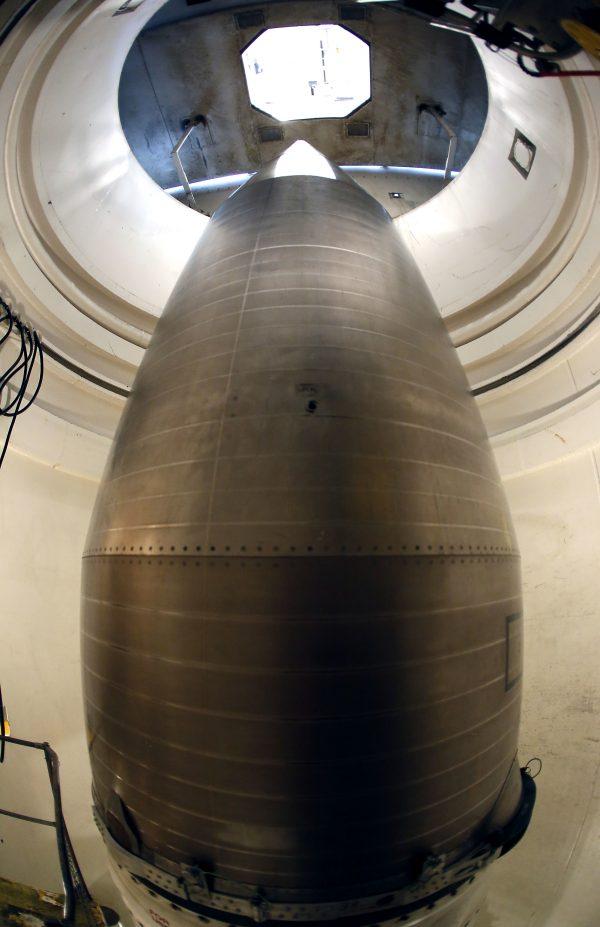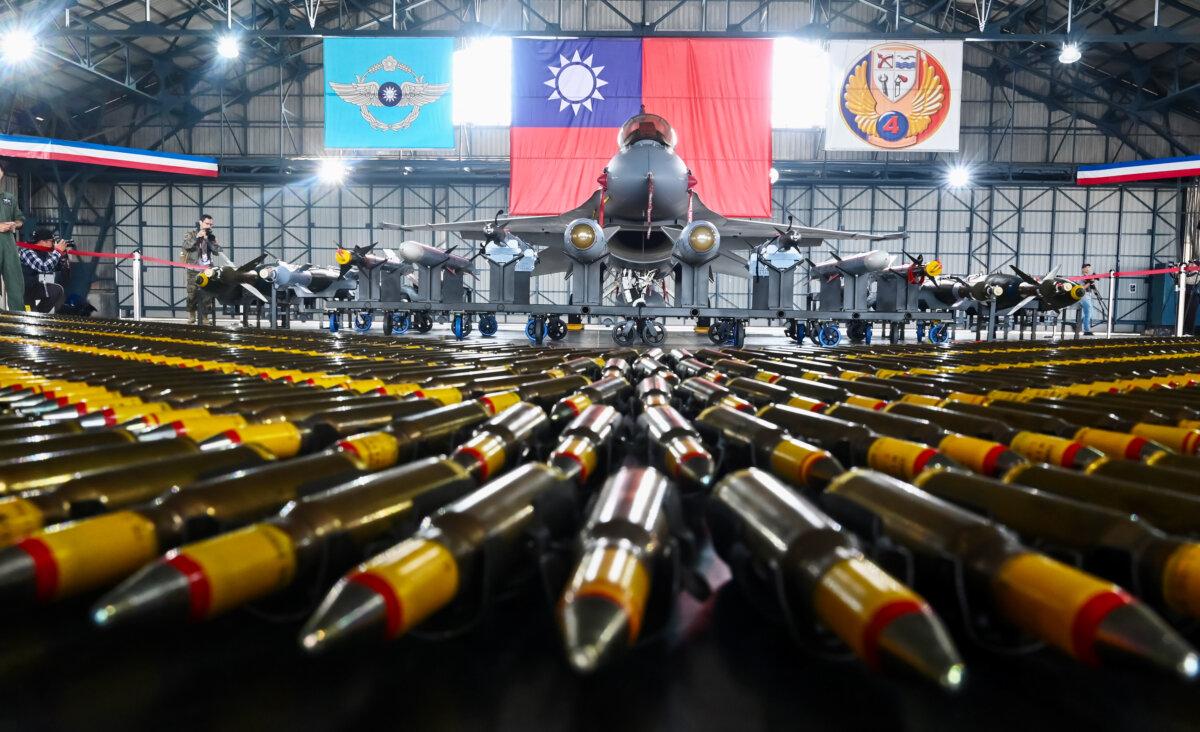‘We’re not ready for the war that looks to be looming,’ Rep. Jake Ellzey said.
For years, Congress has approved increasingly large defense budgets that include billions of dollars in annual allocations for arms and armaments procurement, shipbuilding, and research and development of new weapon systems.
In return for these billions, American taxpayers receive only millions back in the form of new arms, ships, and weapons systems each year. This inefficient cycle subverts national security and must end, a bipartisan chorus of House Appropriations Committee critics demanded during a defense budget hearing on April 17.
Despite these administrative and regulatory bottlenecks, there are production backlogs across the DOD’s procurement spectrum because the nation’s defense industrial base—no longer the Cold War-era “military-industrial complex”—does not have the capacity to fill the Pentagon’s wish lists on time and within budget.
That was before the surge in demand for arms, munitions, and weapons systems, including $44.2 billion for Ukraine since 2022, out-paced the capacity for domestic manufacturers to produce them, raising concerns about the nation’s ability to keep its forces armed in simultaneous sustained, multi-theater conflicts.
China may be the Pentagon’s top “pacing challenge,” but in “the supply-and-equip realm,” its top challenge is pacing, Rep. Jake Ellzey (R-Texas) said. “We need to be on wartime footing … I would say that our acquisitions process is broken. We need to bypass some of the requirements we have because … I’m a little worried about what we have right now. We’re not ready for the war that looks to be looming,” he said.
Rep. Betty McCollum (D-Minn.) agreed. “I’m concerned about our nation’s ability to address emerging threats,” she said. “Many of the major systems that we rely on for each of the services are delayed and require additional funds from their original stated contracts. This needs to stop.”
Endemic Delays, Endless Extensions
Subcommittee chair Rep. Ken Calvert (R-Calif.) said “over-costs and significantly-delayed weapon system acquisition” are hobbling DOD programs, which poses a long-overlooked but increasingly glaring national security risk.
“Pick a service, I can point you to systems that fit this mold,” he said.
The Navy’s Columbia-class ballistic missile and Virginia attack submarines “are both delayed despite being dubbed the service’s number one priority,” Mr. Calvert said.
That’s why the Navy is only ordering one of the two Virginia-class subs its shipbuilding plan calls for in FY25, Mr. Austin said.
“There’s a backlog and rather than increase that backlog, the right thing to do, in my view, is to invest in the industrial base in terms of giving [it] the means to expand capacity by recruiting and retaining the right people, making sure that they can strengthen their supply chains,” he said.
Mr. Austin said in both FY23 and FY24, the DOD received $1.9 billion to invest in a submarine industrial base. “This year, we’re asking you for $4 billion” in the FY25 budget request and another $3.3 billion in the pending supplemental funding bill, he added.
Rep. Rosa DeLauro (D-Conn.) said the investments are late but welcome.
“The secret is well-known that the Navy is experiencing significant issues related to shipbuilding and, in particular, submarines,” she said. “We know we need more ships, more subs, but we lack the infrastructure and the workforce to stay on track. I want to be clear that the private sector could do more to help.”

In addition to shipbuilding delays, Ms. DeLauro said there is also “a significant backlog of ship and submarine maintenance. These delays will impact the Navy’s readiness.”
Mr. Ellzey said the Marines’ request for 35 medium landing ships (LSMs) has been filtering about for five years before being approved in FY20.
“Here we are four years later and we still don’t have them,” he said. The cost has now “ballooned to $350 million” and “we won’t get them until 2027. And that’s assuming we pass the spending bills.”
Mr. Calvert continued with his list of delayed, stalled, discontinued, forgotten, and frozen Pentagon weapons system programs in various stages of meter-running stasis.
“The Army spent over $2 billion developing FARA [Future Attack Reconnaissance Aircraft] only to cancel the program,” he said. “The Space Force GPS ground system is more than $3 billion over budget and seven years late and it’s still not delivered.”
Mr. Calvert cited delays and cost-overruns with the Air Force’s Sentinel intercontinental ballistic missile (ICBM), which will replace the Minuteman III, noting January’s DOD revelation that it will cost 37 percent more than last projected and take at least two years longer than estimated.
Tabbed at $62.3 billion in 2015, a Government Accountability Office (GAO) cost estimate due by July could push the Sentinel’s price tag beyond $130 billion.
“And, of course,” Mr. Calvert said, “there’s an entire hypersonic [missile] program, which has cost over $10.5 billion so far and produced not a single-fielded system.”

Lost Time, Bad Tidings
Ms. McCollum said delays and red tape mean DOD’s “industrial partners” are “losing workers right and left after they’ve been trained, particularly in the shipbuilding industrial base.
“This is unacceptable,” she continued, calling on the Pentagon, Congress, and industry to “work together to ensure that there’s consistency because those jobs—and the people in them—are important to the national security of our nation.”
“There’s another component” to the snarl, Appropriations chair Rep. Tom Cole (R-Okla.) noted.
“It is widely known that Taiwan has ordered billions of dollars’ worth of weapons from our country that haven’t been delivered,” he said, asking the Pentagon chiefs, “Why have we not been able to help a country that literally is under enormous pressure from China in receiving weapons it’s actually paid for?”
Mr. Calvert said despite chronic dysfunction, since the House began focusing on the issue in recent years, progress is being made, citing the $1 billion FY24 allocation for the DOD’s Defense Innovation Unit “along with the flexible authorities necessary to rapidly identify, contract, and deliver innovative technologies to the warfighter.”
He wants the Pentagon to create a “transition tracking action group” using advanced analytics “to track how the department delivers capability to the field” to speed up production and ensure worthy projects don’t get derailed by “valley of death” funding gaps.
“We’re going to do everything we can to move capability as quickly as we can across the valley of death and get it into the hands of our warfighters,” Mr. Austin said, thanking lawmakers for “providing us additional multi-year procurement authority” in the FY24 budget.
“That has been helpful in sending the right signal to the industrial base,” he said, calling the delays and capacity crunch “a complex picture” that only makes it more imperative “to continue our work in expanding the industrial base capacity.”
Ms. DeLauro was among Democrats who found Republican concerns about delivering products on time and under budget ironic, considering under GOP leadership the FY24 defense budget was only adopted in March, with Pentagon spending plans routinely paralyzed in continuing resolution (CR) limbo.
“Many of my colleagues speak at length about wanting to achieve these goals yet we pass a defense spending bill this year over five months late. I repeat, five months late,” she said. “I hope that we do not continue to play games with our federal spending process this year.”
“The one thing that you can’t buy back is time so, over the course of years, these things compound and they create some of the friction” that fosters delays and disfunction, Mr. Austin said.
“The best way that we can help ourselves is to make sure that we receive an on-time budget,” he said. “If you don’t get a budget on time, you’re not executing to your full capability. It has a significant impact on our ability to do a number of things, but you can’t buy back time.”
Mr. Ellzey agreed that time is of the essence. “Today is April 17, 1940 in my mind because the winds of war are already blowing overseas in a way they haven’t in 80 years,” he said. “I wish it was April 17 1946, when we could talk about cuts, but we can’t. We should be on a wartime footing in this country right now.”
Original News Source Link – Epoch Times
Running For Office? Conservative Campaign Consulting – Election Day Strategies!


